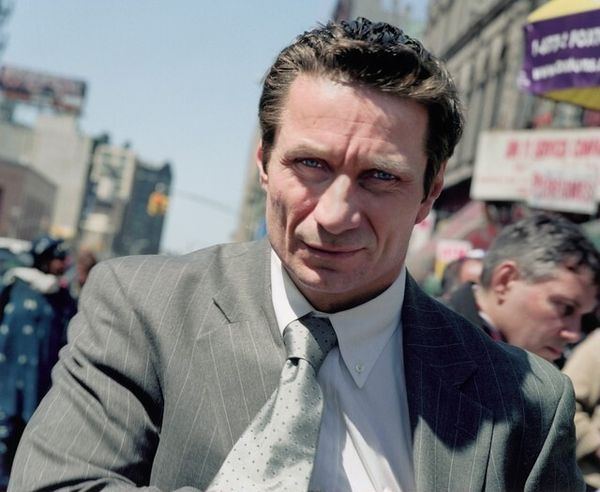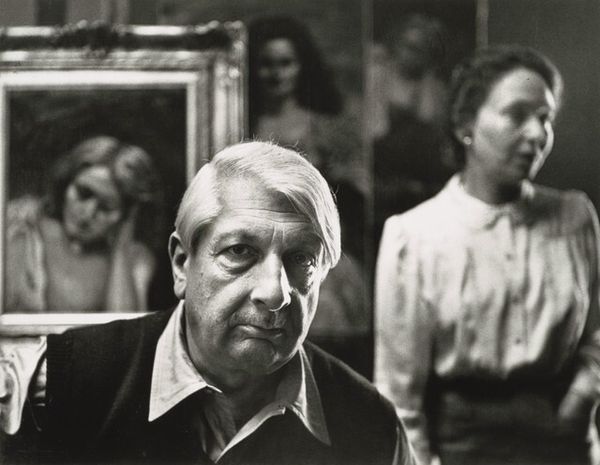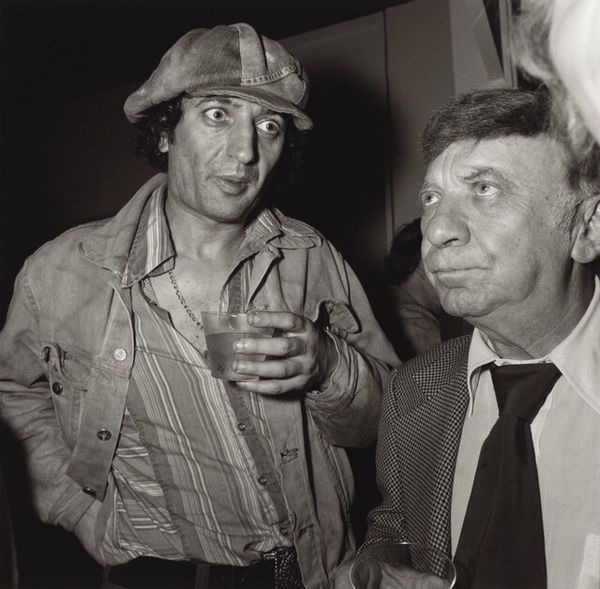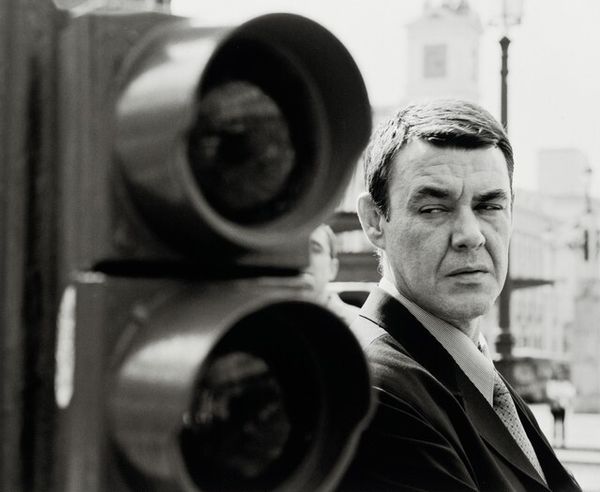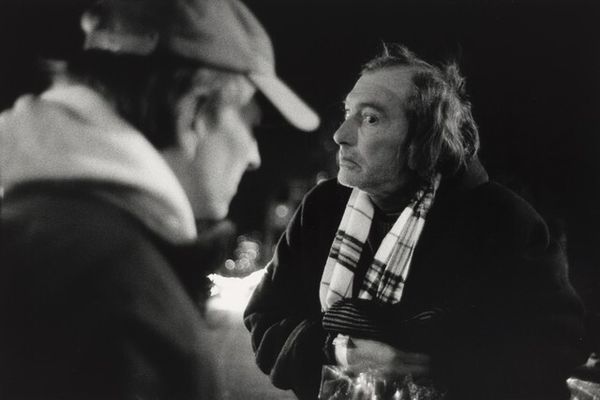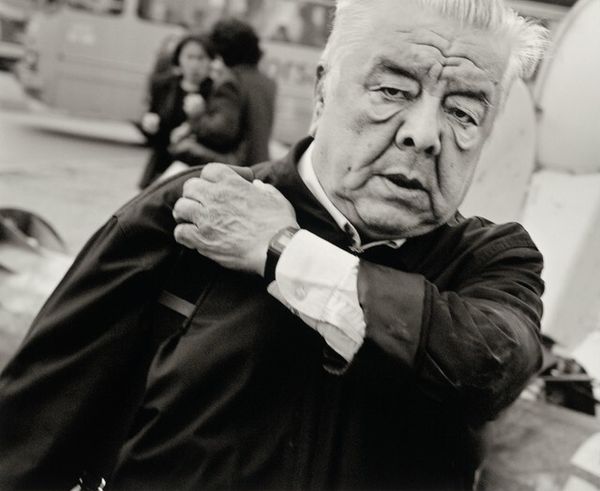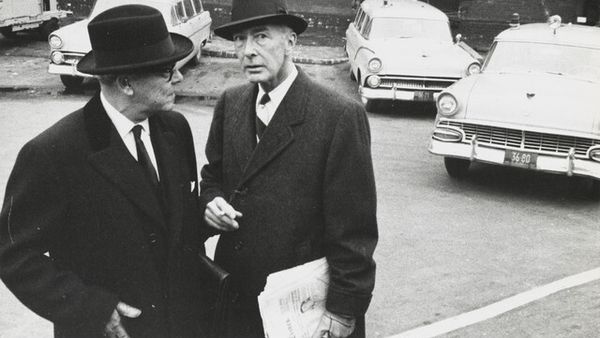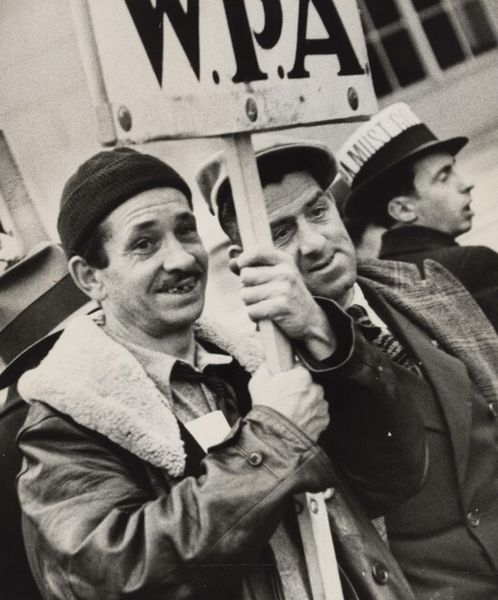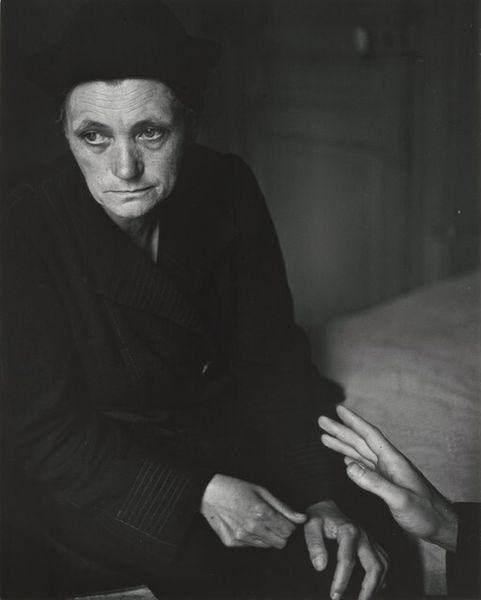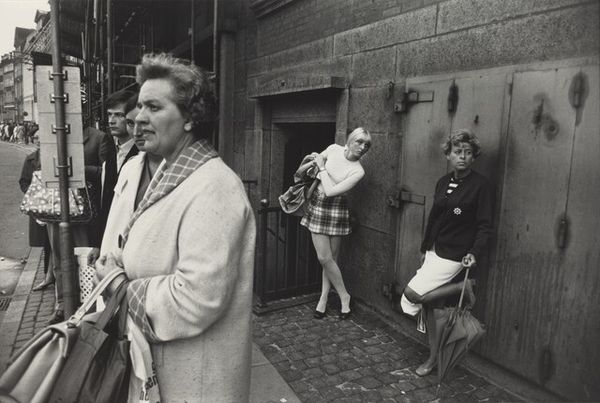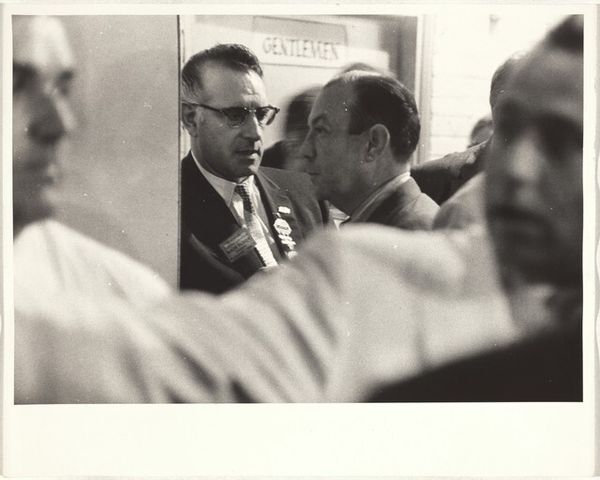
photography
#
portrait
#
black and white photography
#
photo restoration
#
cool tone monochrome
#
street shot
#
black and white format
#
street-photography
#
photography
#
historical photography
#
black and white theme
#
black and white
#
single portrait
#
monochrome photography
#
modernism
Dimensions: image: 40.64 × 49.53 cm (16 × 19 1/2 in.) sheet: 58.42 × 67.31 cm (23 × 26 1/2 in.)
Copyright: National Gallery of Art: CC0 1.0
Curator: Here we have Leo Rubinfien’s photograph, "Moscow, 2003, in Okhotny Ryad." The image, a monochrome piece, was created sometime between 2003 and 2014, offering us a glimpse into post-Soviet street life. Editor: It’s strikingly raw, isn’t it? All those faces pressed together, caught in a moment… it feels like overhearing a heated conversation on a cold day. Very evocative, the kind of image that sneaks into your dreams later. Curator: I see the composition as reflective of a specific moment in Russia's socio-political transition. Rubinfien captures a tension, an unease. Notice how the subjects avoid direct eye contact with the camera, a visual marker, perhaps, of distrust or weariness? Editor: Maybe they just weren't in the mood to smile for the camera! But yes, I get the tension too. That central figure with the cigarette looks burdened, like he's carrying the weight of the world… or at least, the weight of Moscow traffic. The photograph is really well made, it sucks you right in! Curator: His thoughtful posture, combined with the seemingly guarded expressions of the others, suggests a deeper narrative. Consider, also, how black and white photography here reinforces the sense of stark realism. There’s a kind of unvarnished truth presented here. How does it hit you? Editor: Truth is a big word, but there is an absence of varnish! It feels unposed, stolen almost. And it’s compelling! Makes you wonder about the individual stories there. About what happened five minutes before, or what was going to happen five minutes after. What were they all looking at? What had happened to them? Curator: I agree completely. Rubinfien encourages us to reflect upon broader societal anxieties about visibility and surveillance within public spaces. Street photography itself can be invasive. This work urges to ask whose stories get told, and how. Editor: Well, it certainly told me a story! This reminds me of some black-and-white photos my grandfather took on his travels and his quirky notes on the backs. Seeing work like Rubinfien's makes me want to just go make a movie now. This one stays with you, doesn't it? Curator: Absolutely. The photo invites introspection about the act of looking itself. Editor: Art, man. Just when you think you've got it all figured out... something like this appears!
Comments
No comments
Be the first to comment and join the conversation on the ultimate creative platform.
